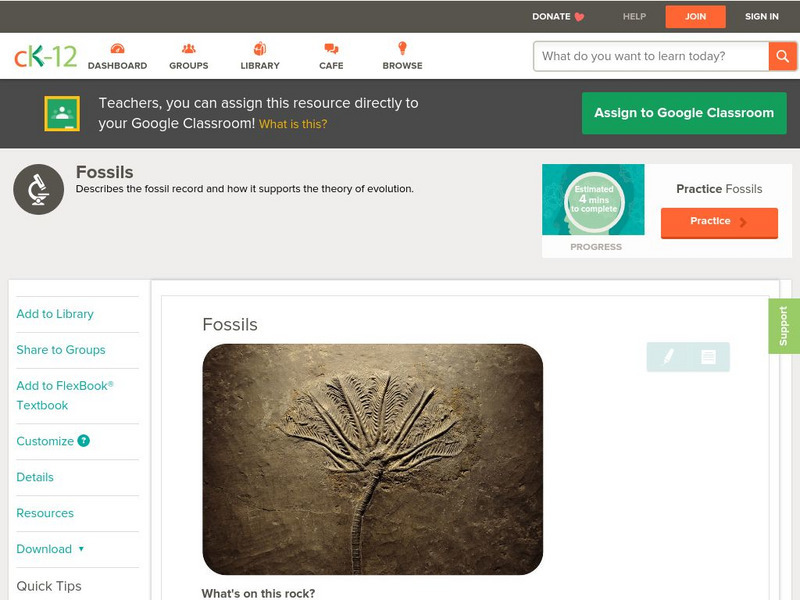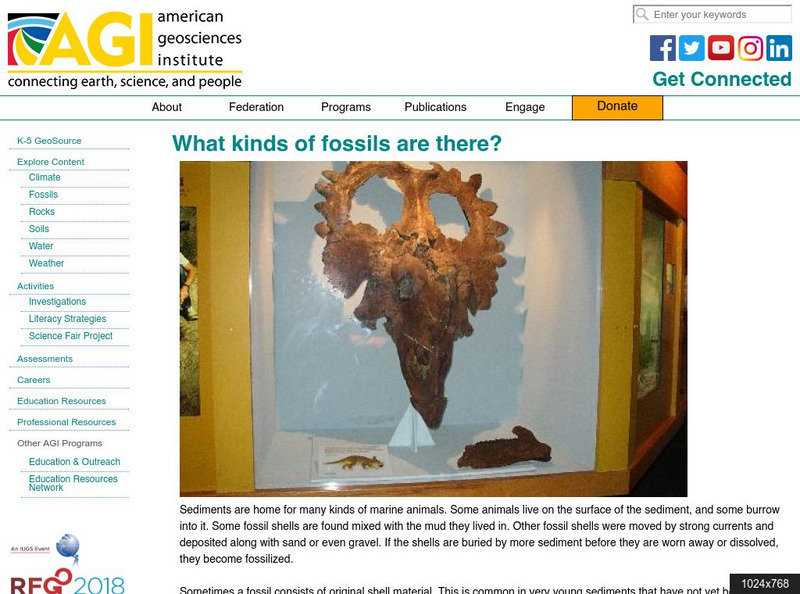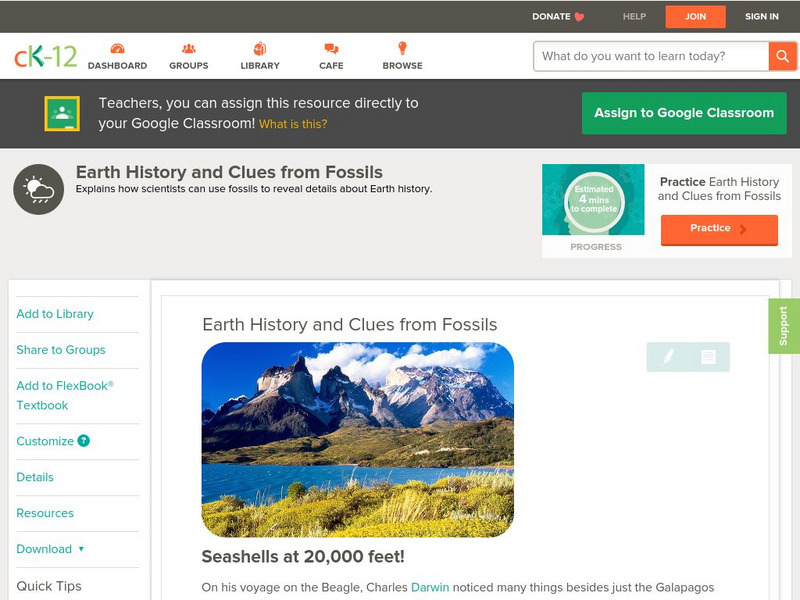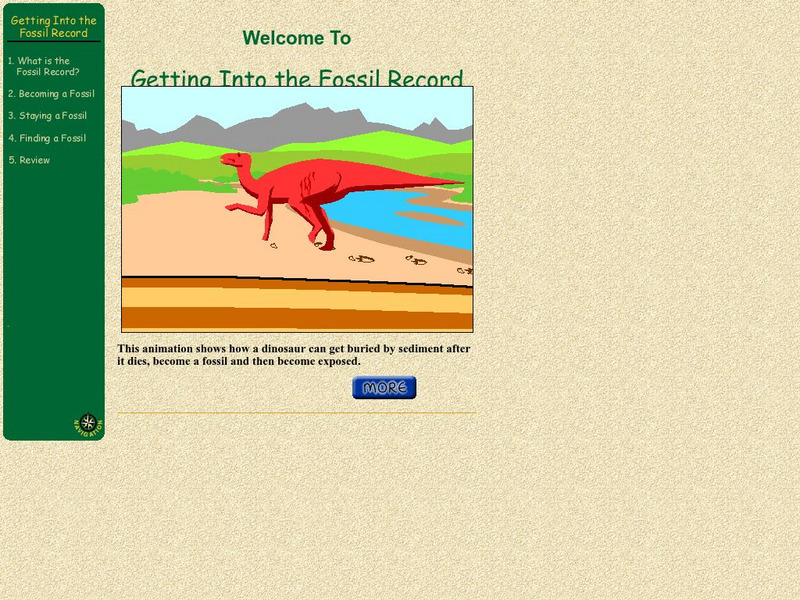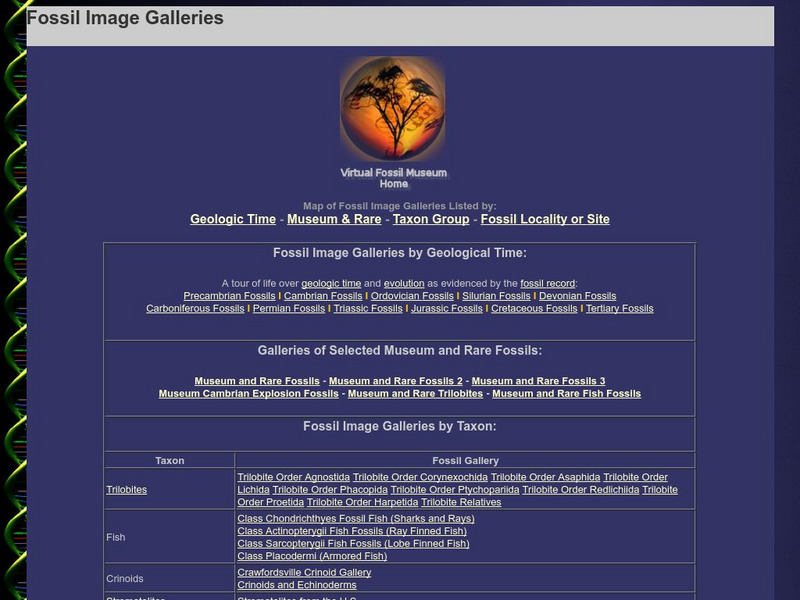Hi, what do you want to do?
American Geosciences Institute
American Geosciences Institute: Fossils
Seven hands-on lessons module where students learn about fossils. These inquiry-based investigations explore how fossils form, properties of fossils, comparing fossils, how they show the age of the Earth, and what paleontologists do.
University of California
University of California Museum of Paleontology: Stories From the Fossil Record
This colorful, interactive site demonstrates how fossils can be used to discover a range of information about the past. Topics include Past Lives, Paleoecology, Geologic History, and Biodiversity.
Indiana University
Indiana University Bloomington: Identifying 3 D Fossil Prints [Pdf]
In this lesson plan, students will identify three-dimensional (3-D) prints of common Indiana fossils to the kingdom, phylum, or class level. Students will observe and record the morphology of specimens and classify organisms based on...
University of California
Ucmp: Getting Into the Fossil Record
A learning module where students tour the fossil record to learn what fossils are, how organisms become fossils, the factors that promote fossilization, how paleontologists find fossils, and why some organisms cannot be fossilized....
American Geosciences Institute
American Geosciences Institute: What Can Fossil Footprints Tell Us?
In this investigation, students examine an image of multiple fossil footprint tracks. They try to construct an explanation for the events that created the pattern of tracks. Even though students come up with different explanations for...
Science Struck
Science Struck: The Meaning of Index Fossils Explained
Explains the importance of index fossils for the dating and chronology of events in the fossil and geological records. Discusses uses and examples of index fossils in the Cenozoic, Mesozoic, and Paleozoic Eras.
CK-12 Foundation
Ck 12: Earth Science: How Fossilization Creates Fossils
[Free Registration/Login may be required to access all resource tools.] Describes the conditions necessary for fossilization.
CK-12 Foundation
Ck 12: Life Science: Fossils
[Free Registration/Login may be required to access all resource tools.] Fossils are the preserved remains of animals, plants, and other organisms from the distant past. By studying fossils, evidence for evolution is revealed....
CK-12 Foundation
Ck 12: Earth Science: How Fossilization Creates Fossils
[Free Registration/Login may be required to access all resource tools.] Describes the conditions necessary for fossilization.
CK-12 Foundation
Ck 12: Life Science: 4.4 Fossils
Understand fossils and the fossil record as it relates to Earth's history.
University of California
University of California Museum of Paleontology: Fossil Evidence
Understanding Evolution provides evidence for evolution using fossils. There are also links to lesson plans.
University of California
Ucmp: Learning From the Fossil Record
Fossils provide scientists with clues about Earth's past. This site from the University of California's Museum of Paleontology is great for exploring lots of information on fossils.
Other
Evidence for Evolution: Fossil Record
These pages are part of a site called "Evolution," that accompanies a textbook by the same name. Mark Ridley is the author. In this section he discusses how fossil records provide undeniable examples of evolutionary change.
American Museum of Natural History
American Museum of Natural History: O Logy: Stuff to Do: Finding Fossils
Guidelines for investigating fossils in the field include specimen-finding strategies, dos and don'ts, examples of the kinds of fossils you may see, and other helpful information, such as how to record your observations and finds in a...
American Geosciences Institute
American Geological Institute: Evolution and the Fossil Record
The American Geological Institute has done an excellent job of defining and explaining evolution in this online booklet. Darwin, fossils, natural selection, and change over time are some of the concepts that are covered. Make sure to see...
American Geosciences Institute
American Geosciences Institute: What Kinds of Fossils Are There?
Learn about the different types of fossils that formed millions of years ago.
CK-12 Foundation
Ck 12: Earth Science: Earth History and Clues From Fossils
[Free Registration/Login may be required to access all resource tools.] How scientists can learn information about the past from fossils.
CK-12 Foundation
Ck 12: Earth Science: Earth History and Clues From Fossils
[Free Registration/Login may be required to access all resource tools.] How scientists can learn information about the past from fossils.
Smithsonian Institution
Smithsonian Learning Lab: Fossils: Footprints Across Time
Smithsonian Education presents "Fossils: Footprints Across Time." Teachers can download this teaching package that introduces students to the study of fossils. Students will discover what fossils can teach us about the Earth as it was...
University of California
Ucmp: Explorations Through Time: Getting Into the Fossil Record
This interactive activity is part of a series of modules that investigate the history of life on Earth. Students will understand the basics of fossils and how they form after completing this activity. Teacher guide and lesson plans...
Biology Corner
Biology Corner: Fossil Record
In this instructional activity, students use the fossil record to understand the topics of speciation, punctuated equilibrium, and gradualism. Students arrange fictitious animals' fossils by age based on appearance to create a fossil...
Other
Fossil Museum: Geologic Time
Pictures of fossils are arranged in chronological sequence and by geologic period. Pictures include scientific names and location where the fossils were found.
Other
Fossil Image Gallery
Images of fossils are listed by taxon. Fossils are also listed by location and geologic era.
The Wonder of Science
The Wonder of Science:ms Ls4 1: Fossil Evidence of Common Ancestry and Diversity
Students analyze and interpret data for patterns in the fossil record that document the existence, diversity, extinction, and change of life forms throughout the history of life on earth under the assumption that natural laws operate...





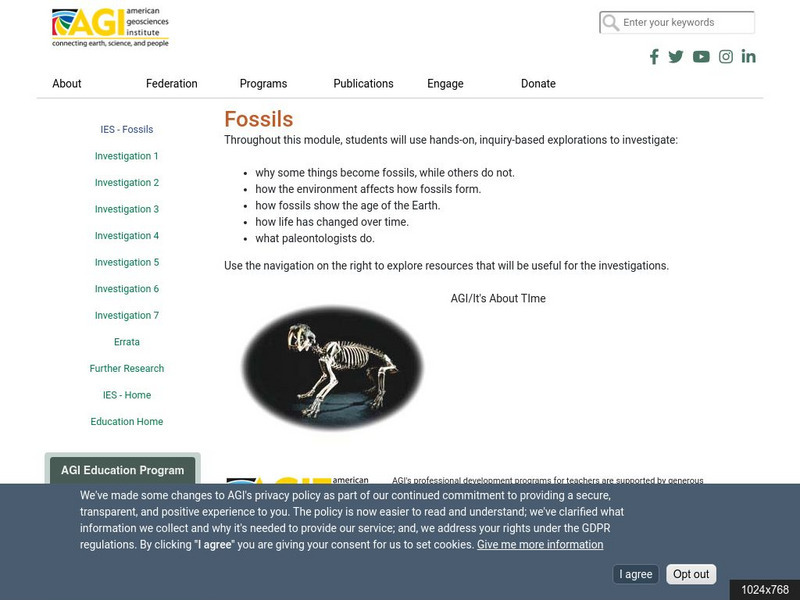

![Indiana University Bloomington: Identifying 3 D Fossil Prints [Pdf] Lesson Plan Indiana University Bloomington: Identifying 3 D Fossil Prints [Pdf] Lesson Plan](https://static.lp.lexp.cloud/images/attachment_defaults/resource/large/FPO-knovation.png)



